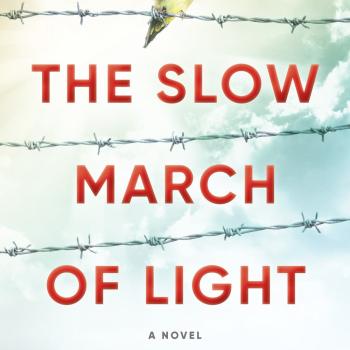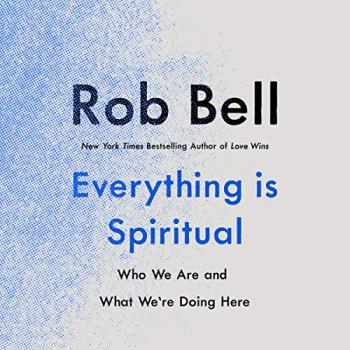 This post is part of an on-going conversation on cultivating a holy imagination, to coincide with the release of Michael Card’s new book, Luke: The Gospel of Amazement.
This post is part of an on-going conversation on cultivating a holy imagination, to coincide with the release of Michael Card’s new book, Luke: The Gospel of Amazement.
Martin Luther once wrote, “The ears are the only organ of a Christian.” Thank God Ezekial, Isaiah, Moses, and Peter, to name just a few, kept their eyes (physical and spiritual) open. The briefest overview of key biblical texts reveals the engagement and creative use of the imagination as the locus of God’s power and presence. The imagination, with its currency of images and metaphors, is vital to a vibrant faith.
Cliff Edwards, in Van Gogh and God, coined a phrase that captures the erosion of the place of imagination in Christian practice: “The verbal manner of doing religion.” Rooted in the prohibition against graven images and the Iconoclast Controversy of the 8th Century, the verbal manner of doing religion became a founding principle of the Reformation and became entrenched as the source of truth in western culture during the Enlightenment. Yes, Jesus is the Word, but what an unfortunate reduction of the meaning of Logos to describe one who painted visual pictures as his preferred way of engaging the imagination and the heart of listeners! Take away the visuals of Isaiah’s vision in the temple and Jacob’s dream of angels ascending and descending a ladder and the accompanying words fall flat. As a pastor, I love words, but the verbal manner of doing religion has left us image, and Spirit, poor. Ironically, the verbal manner of doing religion, and the orthodox interpretation of scripture, has become a graven image, set in stone as the truth.
I’m not asking the church to allow imagination as if its only role is to illustrate what we believe. Imagination is essential for knowing and experiencing God now in life-giving ways.
Christianity has some built-in resistance to the imagination because it claims to have the truth. Yet what is now orthodox was first experienced as dangerous imagining. Not all imaginative expressions carry the truth, but neither are traditions the final poetic rendering of truth.
 Theologian Trevor Hart, calls for “responsible creativity…identifiably rooted in and continuous with the stories of scripture” (p. 18, 24) and Michael Card’s approach to reading scripture calls for “informed imagination.” But what constitutes responsible creativity and an informed imagination? Jesus’ parables of the kingdom of God displayed substantial imagination, but were not considered rooted and continuous with first century Judaism. The prophetic word, “Behold, I am about to do something new,” and Jesus’ teachings, “You have heard it said…but I say to you,” offer helpful guidelines for being rooted, continuous, and informed.
Theologian Trevor Hart, calls for “responsible creativity…identifiably rooted in and continuous with the stories of scripture” (p. 18, 24) and Michael Card’s approach to reading scripture calls for “informed imagination.” But what constitutes responsible creativity and an informed imagination? Jesus’ parables of the kingdom of God displayed substantial imagination, but were not considered rooted and continuous with first century Judaism. The prophetic word, “Behold, I am about to do something new,” and Jesus’ teachings, “You have heard it said…but I say to you,” offer helpful guidelines for being rooted, continuous, and informed.
I am a pastor and an artist. Any artistic expression of mine will reveal who I am, but not exhaust who I am. The “I am that I am” (Popeye pun intended!) is always in process. People could closely examine my paintings and believe they know my work. But that does not mean they will recognize or predict my next painting. It will have connections to my previous work, but not in any predetermined way. The same holds true for you. You have a history, and that history will show up in the becoming self, but not necessarily in predictable ways. God, too, has a history. For Christianity that history is rooted in scripture and tradition – and that history will show up in new experiences of God, but not in predictable, predetermined ways. Familiarity with the Christian tradition helps, but cannot guarantee knowing what God is doing next. God’s freedom is at stake here! Not that God does not have this freedom, but we become accustomed to how God has been experienced in the past, putting God in a box. The imagination is the portal through which God breaks through our limited perspective and brings new vitality. Scripture itself – and its engagement with human imagination – demonstrates the ways the faith community experienced God anew that could not have been predicted, but upon reflection, were seen as rooted in and continuous with the One they experienced in the past.
Christian spirituality and practice must make room for the imagination in order for this kind of newness to emerge. In fact, it would not be “responsible creativity” or “informed imagination” if it did not allow for it! The prohibition against graven images, reflects the ultimate freedom and limitlessness of God who cannot be contained in any one image. Imagination is a powerful reminder to stay open to God who continues to be revealed in our history and experience.
The UCC church has said it well in their promotional material, “…God is still speaking.” But notice: it’s still the verbal manner of doing religion! Let’s use our imaginations! God is still painting parables, creating dreams and visions, cooking up a feast, and moving us to dance! If we are made in God’s image, then we are creators, and the images, metaphors, dance, and ritual that engage our imaginations are vital ways to experience God anew.
Rev. Timothy J. Mooney is a Presbyterian Pastor, a Spiritual Director, and a Fine Artist. Visit his website at timmooneystudio.com.











